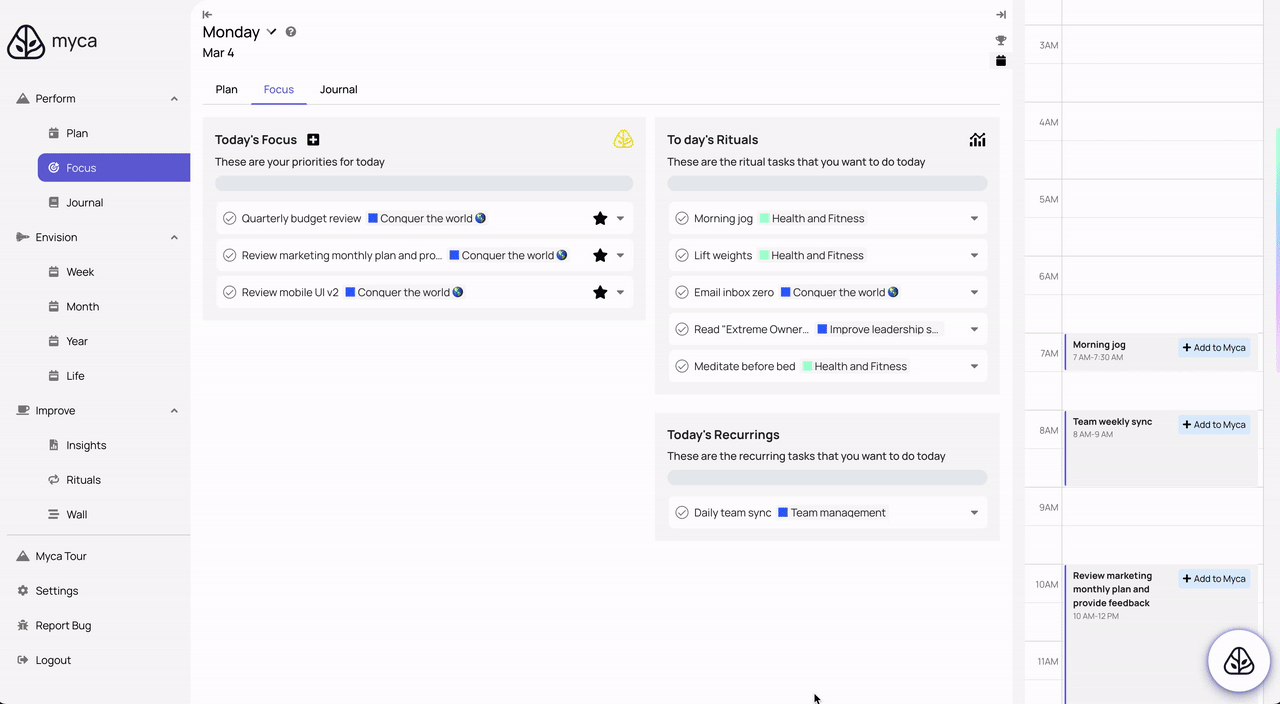What’s time blocking?
Time blocking is a productivity method that involves dividing your day into distinct blocks of time, each dedicated to a specific task or set of tasks.
For every activity on your to-do list, estimate the duration it will likely take and then reserve that block of time in your calendar.
In addition to meetings, your calendar will have time slots for other work tasks, such as emails, prep for meeting slides, etc. Many people add personal tasks into their calendar as well, such as exercise, quality time with family, etc.
Time-blocking is suited for people with multiple responsibilities and trying to balance them all. For example, Elon Musk is known for using time blocking to manage his incredibly busy schedule.
Drive your calendar – Do not let calendar drive you
The insight behind time blocking is that time is your most important resource, allocate it as such. High-priority tasks deserve their dedicated time slots on your calendar for your deep work without distractions. Those tasks may or may not be a meeting.
At the end of the day, your calendar reflects how you spend your time. Therefore, it should be consistent with your priorities and longer-term goals in life.
Who should try time blocking?
- If you consistently multi-task and are overwhelmed
- If you find yourself often getting dragged into meetings but ignoring your high-priority tasks
- If you struggle with life-work integration and have no time for personal tasks such as exercise and spending time with family
Benefits of time blocking
- Ensures Priority Tasks are Complete
- Guards Deep Work Time
- Aligns Work with Energy Peak
- Promotes Realistic Planning

How to incorporate time-blocking into your daily routine?
-
Write down all tasks
- Start by jotting down all the tasks you need to accomplish, whether they’re work-related projects, personal errands, or time for relaxation and hobbies. You can write down these tasks in myca’s plan
- You can also see your today’s commitments on your calendar. In myca, you can import your Google calendar, import your calendar events into myca and allocate your myca tasks to your calendar.
-
Prioritize among today’s tasks
- Here is a well-known approach for prioritization recommended by the 7 habits of effective people. Categorize tasks into four quadrants: important and urgent, important but not urgent, urgent but not important, and neither urgent nor important and prioritize accordingly.
- Think about your longer -term goal. Go to your goal section in myca, this helps you focus on what truly needs immediate attention and what can wait, aligning your daily efforts with goals.
- Make sure that your high-priority tasks are on your focus list in Myca to keep them front and center. If your focus list is too long, trim them down using prioritization
-
Estimate how long each task would take, and add the task on the calendar
- Be honest with yourself to ensure your day is manageable, then schedule these tasks on your calendar. To decide how to allocate tasks to time slots, here are a few thoughts:
- Eat the frog first: Tackle high-priority challenging tasks first
- Block longer-uninterrupted time for high priority tasks. In a long run, observe when you have the most cognitive capability morning? Afternoon? Or evening?) and allocate your deep work during your most productive time slot
- Consolidate small tasks, put them in your energy valley time
- Don’t hesitate to postpone or cancel tasks and meetings that aren’t important.
This structured approach not only provides a clear roadmap for your day but also ensures that you’re dedicating time to what truly matters, making your daily routine more organized and purposeful.
DON’T FORGET: Retrospective is important in time-blocking
Every time when you finish a task, look back at your calendar and see if you really spent the amount of time you estimated for that task. One trick is to edit your calendar after your task is done and mark on the calendar the real amount of time you spent on that task. This allows you to get better at estimating and set realistic goals and schedules for your days.


Your writing is so eloquent and engaging You have a gift for connecting with your readers and making us feel understood